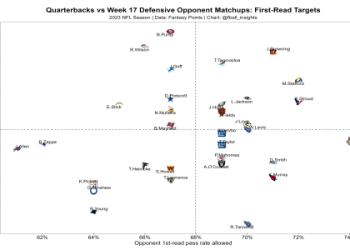The Strategic Role of NFL Football Checks
In National Football League (NFL) contests, “checks,” also widely known as audibles, are pre-snap adjustments to the original play call. Primarily executed by the quarterback for the offense, or a designated defensive leader, these changes are made at the line of scrimmage in response to the opponent’s formation or anticipated strategy. The fundamental purpose of a check is to optimize the team’s chances of success on that particular down by adapting to the immediate tactical situation.
Key Reasons for Implementing Checks:
- To exploit perceived weaknesses in the opponent’s alignment.
- To counter an anticipated defensive blitz or specific coverage.
- To adjust blocking schemes for better protection or run support.
- To move away from a play that appears unfavorable against the observed defensive set.
- To create or take advantage of personnel mismatches.
Executing an Offensive Check
The process of an offensive check begins with the quarterback’s pre-snap read of the defense. If the initial play call is deemed unsuitable, the quarterback will use a system of verbal cues, hand signals, or coded language to communicate a new play or a modification to the existing one. This communication must be rapid and unambiguous to ensure all offensive players are on the same page before the snap.

Core Components of a Successful Check:
- Recognition: The quarterback’s ability to quickly diagnose the defensive formation, identify threats (e.g., blitzers, unfavorable coverage), and spot opportunities.
- Communication: Utilization of a pre-established audible system. This often involves a “kill” call to nullify the original play, followed by the new play call or adjustment.
- Execution: The capacity of all offensive players to instantly understand their revised assignments and execute them effectively under pressure.
Common Offensive Check Scenarios
NFL football checks can alter numerous elements of an offensive play. These adjustments are versatile and situation-dependent:
- Play Type Alteration: Switching from a called run play to a pass play, or vice-versa, based on defensive front or secondary alignment.
- Directional Changes: Modifying the direction of a run play (e.g., from left to right) or the primary target area of a pass.
- Protection Adjustments: Altering blocking assignments for the offensive line and running backs to account for extra rushers or to strengthen protection on one side.
- Route Modifications: Instructing receivers to change their pass routes to better attack the observed defensive coverage (e.g., man-to-man vs. zone).
- “Check With Me” Systems: A scenario where the quarterback goes to the line with two or more potential plays and selects the optimal one based on the defensive look, rather than fully audibling out of a single called play.
Defensive Checks: Countering the Offense
While often associated with offense, defensive units in the NFL also utilize checks. A defensive captain, typically a linebacker or safety, may adjust the defensive front, line stunts, blitz packages, or coverage schemes in response to the offensive formation, personnel groupings, or pre-snap motion. The objective is to nullify the offense’s anticipated play or to position the defense more advantageously.
Foundations of Effective Checks:
- Extensive Preparation: Rigorous film study to understand opponent tendencies and diligent practice of the audible system.
- Player Intelligence: High football IQ, particularly for quarterbacks and defensive signal-callers, enabling rapid and accurate decision-making.
- Clear Communication: A concise, well-understood system of signals and verbal calls that minimizes confusion in noisy environments.
- Unit Cohesion and Discipline: All players must trust the check and execute their adjusted roles precisely.
The ability to effectively implement checks is a critical differentiator between average and elite NFL teams and players, providing a significant tactical edge and demonstrating advanced strategic understanding of the game.





















